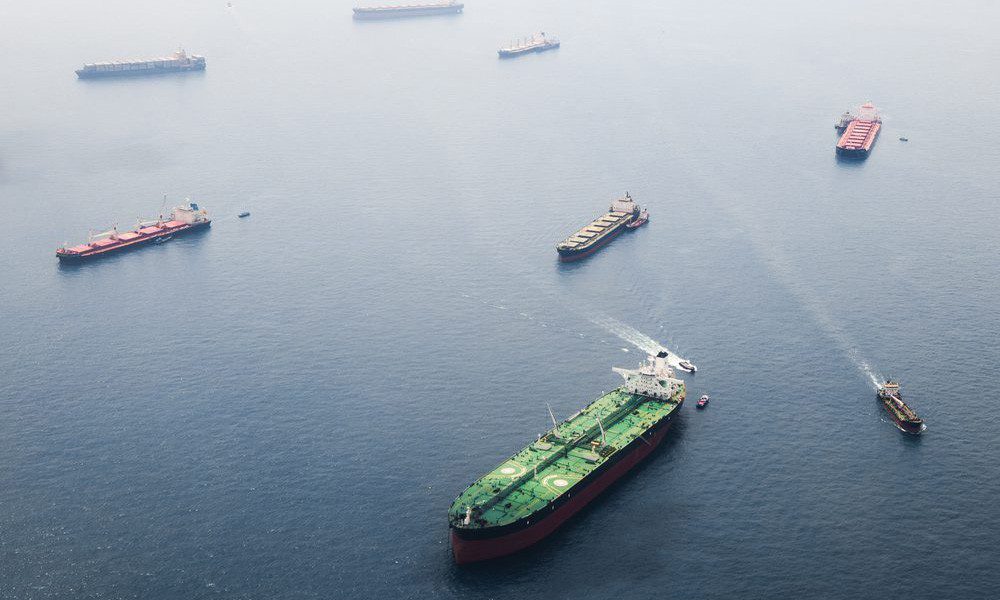A new era for shipping is marked by the voyage of the ship Istanbul Bridge from China to Europe in record time, carrying cargo worth 197 million dollars.
Chinese officials celebrated the successful completion of the voyage of the container ship Istanbul Bridge, which arrived in record time at the port of Felixstowe in Britain.
The ship docked in the United Kingdom, with the Chinese emphasizing that this voyage proves the viability of the northern Arctic route and significantly diversifies maritime trade routes, opening a new channel for transporting goods between China and Northern Europe.
As a man of the sea, I cannot say that I am not fascinated by the dynamism of this new sea route. The idea that a merchant ship can cross the Arctic and reach Europe in less than three weeks seemed until a few years ago almost impossible. And yet, shipping once again proves that it is constantly changing and knows no bounds.
After a 20-day voyage from Ningbo Zhoushan Port, the container ship Istanbul Bridge arrived at Felixstowe, UK, completing the maiden voyage of China-Europe Arctic Express Route. /onlPjMJ2ut
— Ningbo Today (@ningbotoday99) October 14, 2025
The Istanbul Bridge departed from the port of Ningbo-Zhoushan on September 22 for a journey that was expected to last approximately 18 days. According to Reuters, it was delayed by two days due to bad weather off the coast of Norway.
The journey was finally completed on the evening of October 13, approximately 21 days after departing from China. It was, according to Chinese authorities, the fastest ship voyage to Europe, as the China–Europe Railway Express takes about 25 days, while sailing via the Suez Canal takes almost 40 days. From Africa and the Cape of Good Hope, the route can exceed 50 days.
Built in 2000 with a capacity of 66,781 dwt, the ship can carry up to 4,890 TEU. It is registered in Liberia and managed by the Chinese company Sea Legend.
Although there are variations regarding the exact cargo, it is estimated that it carried at least 4,000 containers with clothing, batteries, energy storage systems, and other products, with a total value of approximately 197 million dollars.
The passage took place in an ideal season, when the amount of ice in the Arctic is lowest. The ship, which is not ice-class, crossed the northern passage without icebreaker escort.
The Chinese did not miss the opportunity to send an indirect message to the United States, underlining that their trade with Europe remains strong and stable.
They noted that the European market is eagerly awaiting Chinese exports of photovoltaics, lithium batteries, and electric vehicles, while the new route will accelerate deliveries and enhance the diversification of trade flows to Europe.
At the port of Ningbo, officials welcomed the start of the new shipping line, noting that the European Union is China’s largest trading partner and its importance is continuously increasing.
Bilateral trade in the first nine months of the year is estimated at more than 46 billion dollars, marking a 12% increase year-on-year and representing about 18% of the total exports of the port of Ningbo.
The ship departed from Felixstowe on Tuesday afternoon and is heading to Hamburg, Germany, where it is expected to arrive on October 15. It was initially scheduled to stop at Rotterdam, but due to strikes and delays at the port, the stop there appears to have been canceled. After Germany, the journey will continue to Gdańsk, Poland.
China aims to establish the Northern Sea Route, supporting the Russian initiative to develop shipping through the Arctic. The Chinese NewNew Shipping Co. has been operating on this route for the last two years and has announced it will increase its sailings. The ship NewNew Polar Bear arrived at the Russian port of Arkhangelsk for the first time in August.
Environmental organizations continue to express strong concern about the use of the Arctic as a trade route, citing environmental and operational risks. Nevertheless, with the melting of the ice, Russia appears determined to continue efforts to operate the route year-round. Its goal is to move 200 million tons of cargo annually through the Arctic by 2030.
However impressive these developments may be, we must keep in mind that the Arctic remains a sensitive area that requires respect. It is also a difficult sea route that requires immense attention and will certainly be a challenge for sailors.
Shipping has undoubtedly found a new sea route, which is expected to be a complete game-changer; however, the great challenge will be to keep the venture sustainable, without losing the balance between progress and nature. What is certain is that we are facing something new and big. It is a new era for shipping and global trade.





